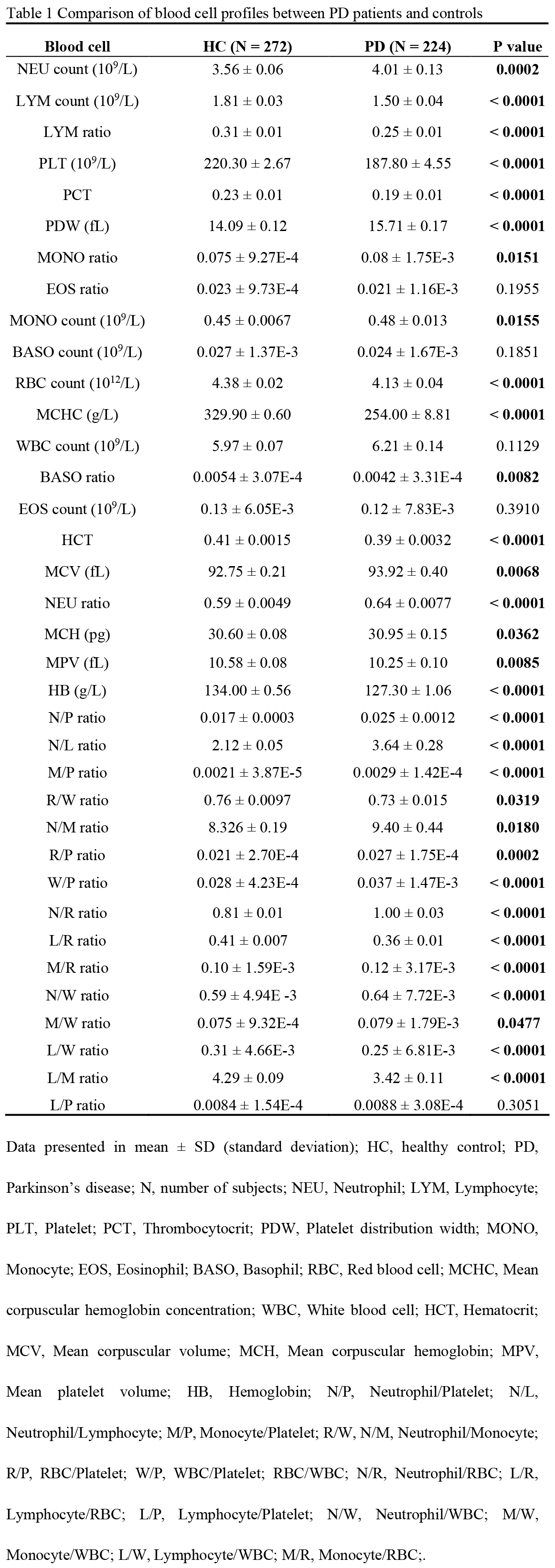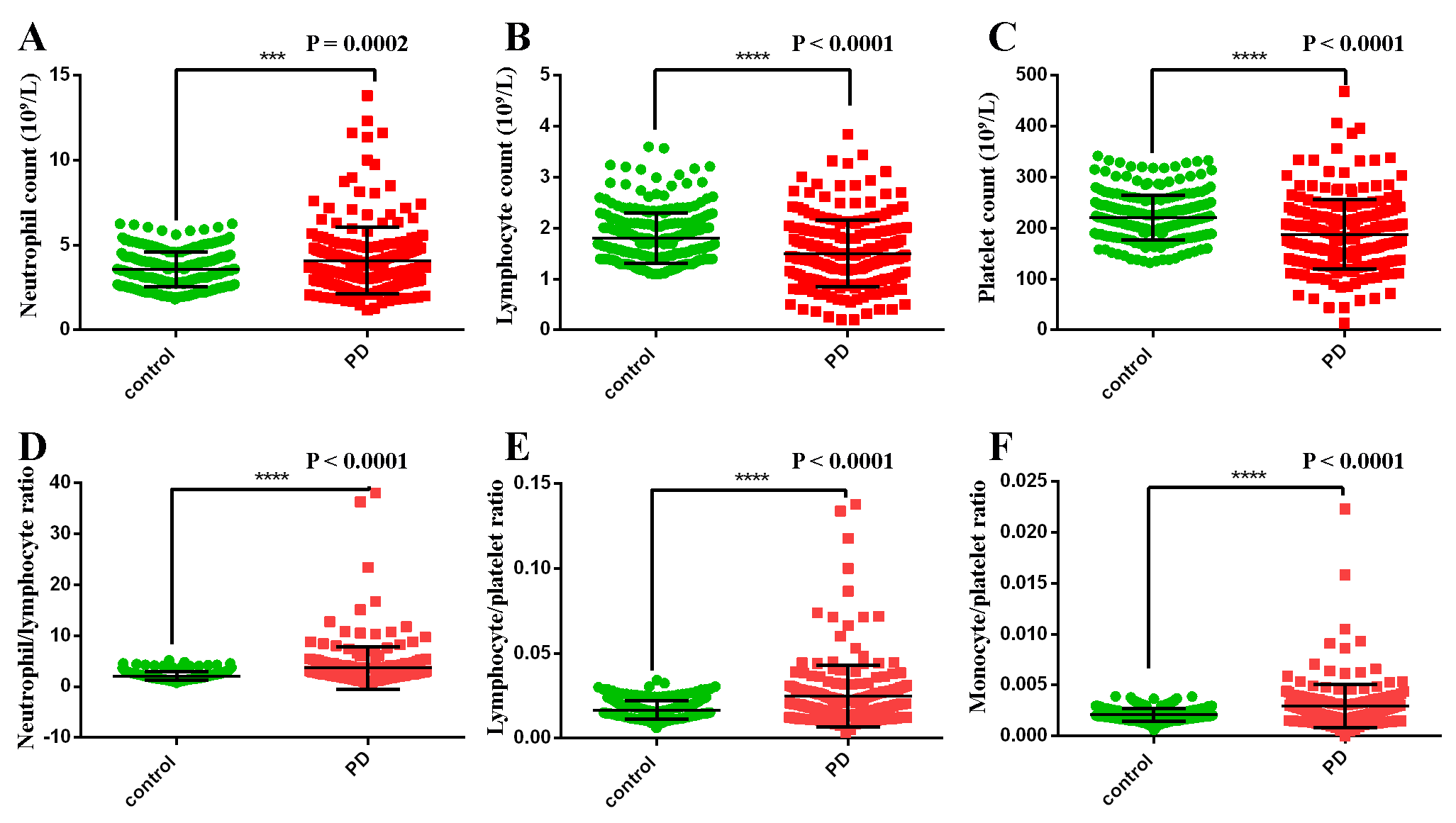Category: Parkinson's Disease: Pathophysiology
Objective: The aim of this study is to investigate the relationship between peripheral blood cell profiles and Parkinson’s disease (PD).
Background: Abnormal immune response and systemic inflammation have been proposed to be involved in the pathogenesis of PD [1]. As peripheral blood cell profiles were convenient and effective indicators of systemic inflammation in clinical practice [2, 3], thus, we performed a retrospective case-control study to estimate the alterations of peripheral blood cell profiles in PD patients.
Method: A total of 224 PD patients and 272 age-matched controls (55-95 years) were enrolled in this study. All PD patients were diagnosed based on the United Kingdom Parkinson’s Disease Society Brain Bank (UKPDSBB) criteria [4]. Data of blood cell count and corresponding ratio obtained from routine blood measurement by flow cytometer were analyzed using Student’s t-test in GraphPad Prism 8.0 Software.
Results: Numerous peripheral blood cells count and their ratios had changed in PD patients as compared to controls, and all the comparison data were presented in Table 1. According to the mean difference between PD patients and controls, the top three significantly altered cell counts were increased neutrophil (P=0.0002, Figure 1A), decreased lymphocyte (P<0.0001, Figure 1B), and decreased platelet (P<0.0001, Figure 1C). Moreover, the top three obviously altered cell count ratios were increased neutrophil/lymphocyte ratio (P<0.0001, Figure 1D), neutrophil/platelet ratio (P<0.0001, Figure 1E), and monocyte/platelet ratio (P<0.0001, Figure 1F).
Conclusion: Our preliminary data showed that PD patients had an extensive alteration of peripheral blood cell count and ratio, especially those closely associated with inflammatory response (neutrophil, lymphocyte, and monocyte), which might be used as potential indicators of PD. Further studies are required to comprehensively evaluate whether and how changes in blood cells contribute to the development of PD.
References: 1. Tan, E.-K., et al., Parkinson disease and the immune system—associations, mechanisms and therapeutics. Nature Reviews Neurology, 2020. 16(6): p. 303-318.
2. Paliogiannis, P., et al., Neutrophil to lymphocyte ratio and clinical outcomes in COPD: recent evidence and future perspectives. European Respiratory Review, 2018. 27(147).
3. Dettori, P., et al., Blood cell count indexes of systemic inflammation in carotid artery disease: Current evidence and future perspectives. Current Pharmaceutical Design, 2021. 27(18): p. 2170-2179.
4. Daniel, S. and A. Lees, Parkinson’s Disease Society Brain Bank, London: overview and research. Journal of neural transmission. Supplementum, 1993. 39: p. 165-172.
To cite this abstract in AMA style:
G. Tian, R. Zhou, X. Guo, R. Li. Alteration of peripheral blood cell profiles in Parkinson’s disease: a retrospective case-control study [abstract]. Mov Disord. 2022; 37 (suppl 2). https://www.mdsabstracts.org/abstract/alteration-of-peripheral-blood-cell-profiles-in-parkinsons-disease-a-retrospective-case-control-study/. Accessed November 8, 2025.« Back to 2022 International Congress
MDS Abstracts - https://www.mdsabstracts.org/abstract/alteration-of-peripheral-blood-cell-profiles-in-parkinsons-disease-a-retrospective-case-control-study/


